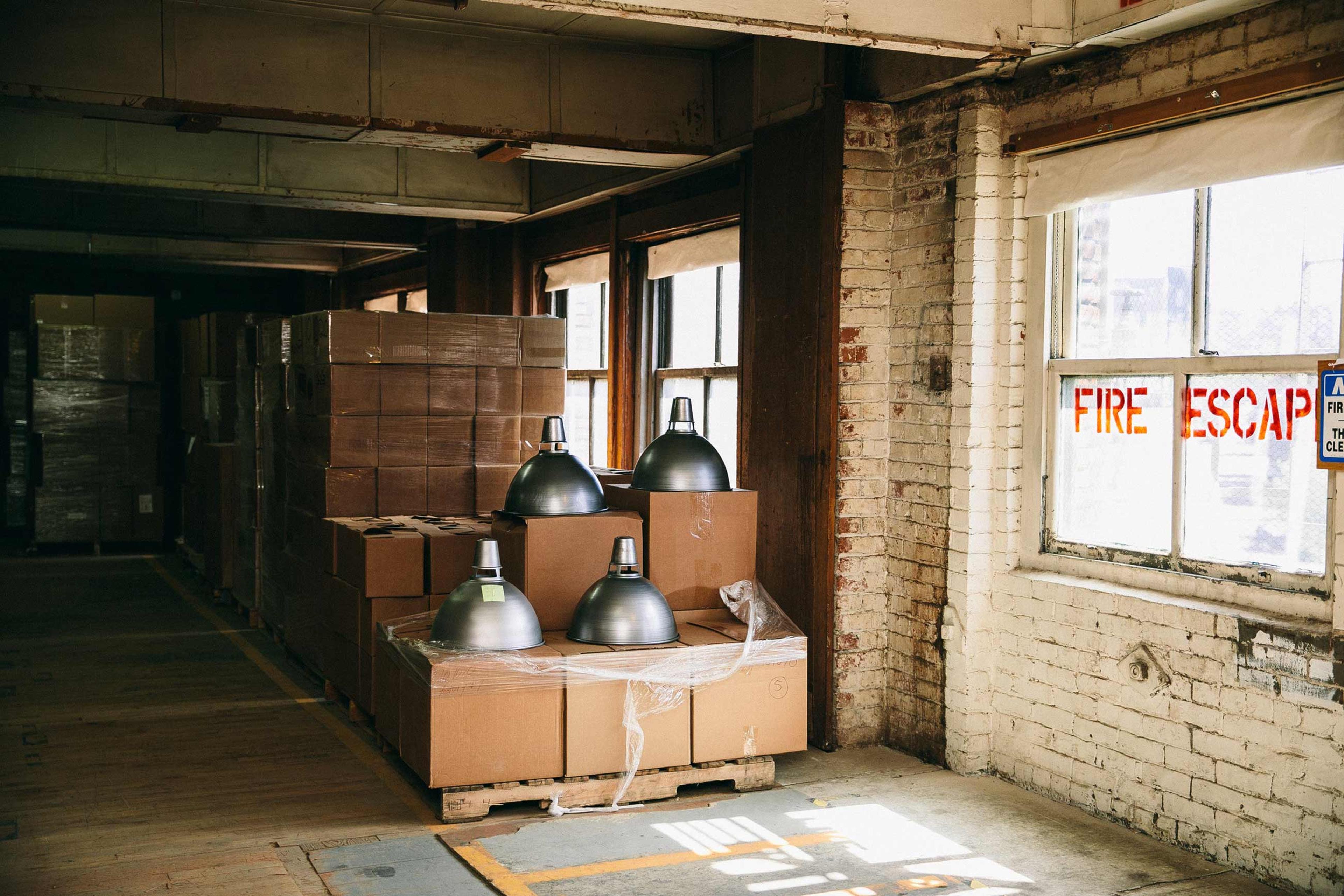Inside the Design: The Factory Collection

If you’ve ever seen one of our lights and wondered how it came to be, all you have to do is step inside the Schoolhouse headquarters and factory. Our unique vertically integrated business model allows us to touch the product from initial design to engineering, assembly, and final execution. In short, it means the majority of the making happens right here in Portland, Oregon. We’re incredibly grateful for what we’re able to achieve together, and today, we wanted to spend some time spotlighting one of our most iconic collections put to market — the Factory Lighting Family.

Inspired by the original RLM shade, our Factory fixtures were modeled after a series of vintage railway lights. There were a few design elements that we wanted to preserve, but at the top of the list was its timeless form.
Let's pause for a little lighting history. In the early 1900s, RLM (reflector luminaire manufacturer) shade inventor Reuben Berkley Benjamin used the principle of sound to inform the shape of what is now the factory shade. The goal was to create a silhouette which distributed light rays evenly and efficiently throughout a space. Too wide of an angle, and the quality of light would diminish. Too narrow, and a harsh spotlight would appear. The end result is a perfectly balanced conical shape coated with enamel for its naturally reflective properties. While much has changed between then and now, the science behind the shade remains.
 A vintage RLM shade designed by Revo (via Trainspotters)
A vintage RLM shade designed by Revo (via Trainspotters)
 Vintage train station pendants inspired our creative brief (unknown image source)
Vintage train station pendants inspired our creative brief (unknown image source)
"The goal was to create a silhouette which distributed light rays evenly and efficiently throughout a space."
Inside a century-old brick building in Portland, Oregon, our obsession with quality compels us to create modern heirlooms the old fashioned way. To that end, our Factory fixtures are make from hand-spun steel on a custom RLM tool unique to Schoolhouse. Once the raw shades are received in-house, they are sanded, then blasted with tiny glass beads on the fourth floor of our factory. The process of bead-blasting first, allows the powder to evenly coat each shade.


Once the shades are dry, they make their way to our 2nd floor assembly team. To set the scene, picture wood floors weathered from more than a century of use, towers of cardboard boxes, spools of many-colored wires, bubble wrap rolls, and lots of noise. Carts of materials roll from place to place over walkways reinforced with steel plates. Several clocks tick away in unison as they’re tested for accuracy.
All of our lighting and many of our home goods pass through just three workstations on this floor. Once the factory shades are received, the task of assembly begins. The first station collects all the necessary parts, inspects them for quality, and starts the basic wiring. The next bench takes these parts and assembles the fixture. The final team tests every light to make sure everything is up to standards before packaging the finished fixture for shipping and delivery.


Creating a modern heirloom is much more than making something beautiful. Our Product Designers always start by considering the needs of our customers, our design values, and the products that have come in the past before putting pencil to paper.
Available as a wall sconce, surface mount, or pendant, our Factory Collection comes in multiple color options and four shade silhouettes to fit a variety of interiors. A humble ode to the heritage of American manufacturing, each fixture perfectly encompasses our commitment to quality craftsmanship and domestic utility. A light may be straightforward in its function, but creating one with the timeless appeal is no small task. As the old adage goes, “Simplicity is the ultimate sophistication."


